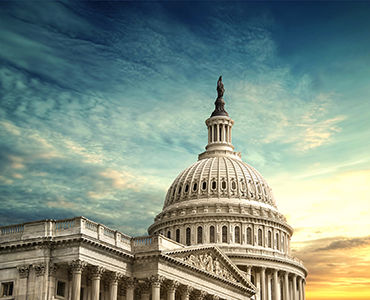The IRS has issued final regs that clarify the definition of qualifying relative for purposes of various provisions of the Code for tax years 2018 through 2025. The final regs adopt the regs proposed in June 2020 without substantive change.
Background.
While Code Sec. 151(a) allows a taxpayer to claim deductions for exemptions for the taxpayer and his or her spouse (Code Sec. 151(b)), and for any dependents (Code Sec. 151(c)), the “exemption amount” for tax years 2018 through 2025 is zero.
Before it was amended by the Tax Cut and Jobs Act (“TCJA,” PL 115-97), the Code Sec. 151(d) exemption amount was a base dollar amount that was adjusted for inflation. Before the TCJA, the exemption amount for 2018 was calculated to be $4,150. (Rev Proc 2018-18, 2018-10 IRB 392)
Code Sec. 152(a) defines a “dependent” to include a “qualifying relative.” To be a qualifying relative, an individual must have gross income less than the Code Sec. 151(d) exemption amount for the calendar year (“income test”) (Code Sec. 152(d)(1)(B)) and receive more than one-half of their support from the taxpayer claiming the individual as a qualifying relative (“support test”). (Code Sec. 152(d)(1)(C))
One provision of the Code that references a “qualifying relative” is the Code Sec. 24 child tax credit. Code Sec. 24(h)(4)(A) provides a $500 credit for certain dependents of a taxpayer, including qualifying relatives as defined in Code Sec. 152(d), “other than a qualifying child described in subsection (c).” This credit applies for tax years 2018 through 2025.
Not. 2018-70. On August 28, 2018, the IRS issued Notice 2018-70, 2018-38 IRB 441. This Notice announced the IRS’s intent to reflect the changes made to Code Sec. 151 by the TCJA by issuing proposed regs providing that the reduction of the exemption amount to zero under Code Sec. 151(d)(5)(A) for tax years 2018 through 2025 will not be taken into account in determining whether an individual meets the requirement of Code Sec. 152(d)(1)(B) to be a qualifying relative.
Under Notice 2018-70, the exemption amount referenced in Code Sec. 152(d)(1)(B) will be treated as $4,150 (adjusted for inflation) for tax years in which the Code Sec. 151(d)(5)(A) exemption amount is zero. See IRS clarifies definition of “qualifying relative” in light of TCJA changes (08/29/2018).
Proposed regs. In June 2020, the IRS proposed regs that clarified the definition of “qualifying relative.” Consistent with Notice 2018-70, the proposed regs provide that when determining whether an individual is a qualifying relative for purposes of various provisions of the Code that refer to Code Sec. 152 in years in which the exemption amount is zero, the Code Sec. 151(d) exemption amount is the inflation-adjusted Code Sec. 152(d)(1)(B) exemption amount published annually in a Revenue Procedure. (Prop Reg §1.152-3(c)(3)(i), Preamble to Prop Reg REG-118997-19) See Proposed regs clarify qualifying relative definition (06/09/2020).
Final regs.
The final regs adopt the 2020 proposed regs without substantive change. In addition, in response to a comment to the 2020 proposed regs regarding a statutory cross reference in Code Sec. 24(h)(4) to “a qualifying child described in subsection (c),” the final regs clarify the statutory cross reference is a reference to Code Sec. 24(c), not to Code Sec. 152(c). (Reg §1.24-1)
Applicability date. Reg §1.24-1 and Reg §1.152-2(b) apply to tax years beginning on or after the date they are published in the Federal Register. (Reg §1.24-1(b); Reg §1.152-2(b)(2))
Reg §1.152-2(e) applies to tax years ending after August 28, 2018, the date the IRS issued Notice 2018-70. (Reg §1.152-2(e)(2))
Note.
IRS has provided that what it has issued is an advance copy of the final regs, that it has not yet assigned a publication date, and that there may be changes to the regs before publication.
To continue your research on qualifying relatives, see FTC 2d/FIN ¶A-3605.6; United States Tax Reporter ¶1524.
Subscribe to our Checkpoint Daily Newsstand email to get all the latest tax, accounting, and audit news delivered to your inbox each weekday. It’s free!


